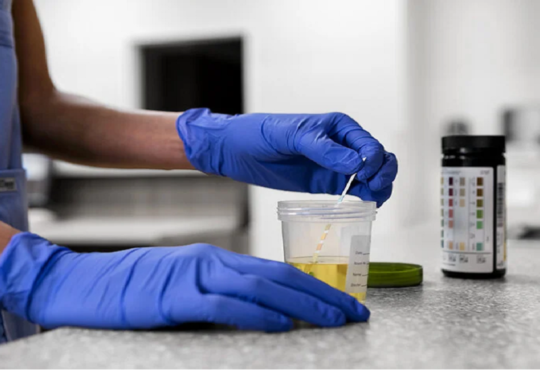
Netball Injuries and How to Treat Them
Netball is a widely popular team sport in Australia, among people of all ages and skill levels. Like many sports, netball puts a lot of pressure on the body and many netball players will face time off due to injury. Netball involves fast speed and rapid deceleration, twisting and pivoting and while a healthy body can perform these movements easily, they don’t come without risks. Netball players are susceptible to slips and falls, awkward landings, overexertion, collision with other players and being hit by the ball.
Knee, ankle, wrist, hand and finger injuries occur frequently in this sport, often as sprains, bruising, dislocation and fractures. They may be a sudden onset injury such as a hand injury, or they can develop over time through overuse, especially in the knees and shoulders. Here are some of the most common netball injuries, information on how they can be treated and some advice to help prevent further injury and pain.
Knee Injuries
Twisting movements along with high speed and quick stopping mean that knee injuries are pretty common. There are several parts of the knee, both within the knee and outside the joint that can be irritated or injured, causing pain.
The anterior cruciate ligament, or ACL, connects the thigh bone to the shin bone, and is one of the key ligaments that helps stabilise the knee joint. The ACL can be ruptured by change of direction and is thought to account for 25% of reported major netball injuries. The meniscus is the cartilage that cushions the knee joint and can also be torn by change of direction.
Patellofemoral Joint Pain Syndrome causes pain in the front, sides or top of the kneecap, caused by the articulating surfaces between the kneecap and thigh bone becoming irritated. The tendon that attaches the thigh muscle to the shin bone is the patellar tendon and when it becomes overloaded too quickly it can become weak and painful.
Ankle Sprains
The ankle is another part of the body often injured while playing netball, with sprains occurring when the ankle ligaments are overstretched. Occurring while stepping, jumping, an uneven landing or sudden changes in movement, ankle sprains vary in their severity.
A relatively minor ‘rolling’ of the ankle is painful but won’t need major intervention. Complete ligament ruptures, fractures or broken bones are the other end of the spectrum.
Finger and Hand Injuries
A sprained finger or thumb often occurs when the ball hits it, causing it to be bent out of its normal range of movement, resulting in damage to the ligaments that connect the bones together. Swelling is likely to occur as well as restricted movement of the finger.
Broken bones and carpal fractures in the wrist can occur when falling onto your hand or from impact from the ball.
Treatment for Netball Injuries
Netball injuries can be relatively minor, such as a rolled ankle or a bruised finger from a ball. Major injuries will be quite obvious, and will be obvious from certain signs including:
- A snap or popping noise may indicate that something has ruptured or broken.
- Being unable to put any weight on the injured area is a sign something serious has occurred.
- Immediate swelling following the injury is a sign to stop and seek treatment.
If you experience any of these, medical assistance should be sought. Regardless of the severity of the injury, use the PRICE principle initially.
- Protection – protect the area from too much movement, such as using a splint or brace.
- Rest – rest as much as possible to prevent further injury.
- Ice – applying a cold pack will decrease bleeding and reduce muscle spasm and pain.
- Compression – this can help prevent excessive bleeding and protect the injured tissue, reducing healing time.
- Elevation – this helps gravity to drain fluid away from the injured site to decrease swelling and relieve pain.
This principle should be applied as early as possible after the injury and continued for at least the first 24-72 hours to limit swelling and relieve pain.
If you have experienced an acute knee or ankle injury, seeking the expert advice of a sports physiotherapist will give you a thorough assessment and a tailored treatment plan. Your physiotherapist will be able to reduce the acute pain as well as identify the contributing factors and address them with relevant exercises. Recovery from a significant netball injury can take several weeks.
Preventing Netball Injuries
Good preparation is important to help prevent injury, by always warming up, stretching and cooling down. Doing some training prior to a game will ensure the body and mind are ready to play. Training exercises will help achieve good technique on passing, catching, jumping and landing.
A good fitness program to develop aerobic fitness, strength, flexibility, coordination and balance is also important. Strengthening the quadriceps, calves, glutes and hamstrings will increase the control of the knee and improve the shock absorption. Improving the strength of the muscles around the ankle will allow for better stability and support while playing netball.
Improving balance and control in both static positions and dynamic movements like jumping can also provide more stability to help prevent injury. It is vital to always wear the correct footwear and wear protective equipment, especially if there are weaknesses. Taping or bracing can help reduce the risk of injury.
If you have an injury sustained from a netball game or another sport, get in touch with the experienced team at Melbourne Sports Physiotherapy who will have you back on the court as quickly as possible.




